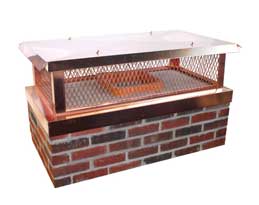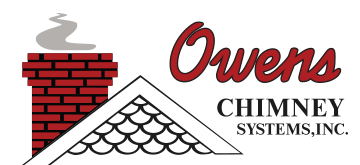Fireplace systems are very complex, with functions performed both below and above the roof. The chimney travels up through the home and extends from the roof, where it vents air from a burning fire. If the top of the chimney is open, it provides an entry route for water, debris, and even animals. A chimney cap prevents these intrusions and keeps fire sparks from landing on dry rooftop material that could ignite.

This cap comes in various styles, shapes, and colors. Most are made from copper, aluminum, or stainless or galvanized steel. They typically feature mesh screening that keeps animals out and prevents sparks from landing on the roof. Multi-flue styles protect the interior of the chimney and the mortar crown on top of it. A chimney cap is usually mounted to a chimney with screws spaced around the base of the cap and tightened to the flue.
An inside mounting cap is installed on an unlined chimney or one containing a flue that does not sufficiently protrude from the top. Fasteners like mounting angles are available for other installations. These are cemented or lag bolted to the chimney to provide the desired protection. Standard stainless steel caps can increase draft as well as draft increasing styles.
An added benefit of a chimney cap is to prevent debris, breakdown, and corrosion at the base of the chimney. Over time, the base of an uncapped chimney may experience problems. The cap provides this area with additional protection, reducing the likelihood of needing a chimney service to rebuild or repair the base.
It takes only minutes for a professional to install a chimney cap that will provide years of protection. Styles are available in all price ranges and some have decorative features that enhance the home exterior. Homeowners with exposed chimneys should contact a chimney professional regarding their options.
